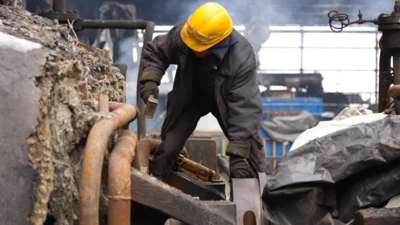We've updated our Privacy and Cookies Policy
We've made some important changes to our Privacy and Cookies Policy and we want you to know what this means for you and your data.
Peru 'rivalling Colombia' on coca production
Peru is rivalling Colombia as the main producer of coca leaf, the raw material for making cocaine, the UN says.
The UN says Peru now produces more coca leaf by weight, although Colombia still has the largest area of coca leaf production.
However, Peru accepts it could soon overtake Colombia in coca production.
A steady fall in production in Colombia showed the government's anti-drug policies were succeeding, the UN said.
Top Stories
There was little change in the scale of cultivation in Bolivia, the third biggest producer, which accounts for 15% of world production.
Top Stories
Coca cultivation in Colombia fell by 16% in 2009 to 68,000 hectares, a decline of almost 60% since the peak of a decade ago, according to UNDOC estimates.
"The drug control policies adopted by the Colombian government over the past few years - combining security and development - are paying off," said UNDOC executive director Antonio Maria Costa.
Outgoing Colombian President Alvaro Uribe made the fight against drug production and left-wing rebels who are funded by the drug trade a cornerstone of his government.
'Futile' war on drugs
The offensive has been supported by the US, which has given billions of dollars in mostly military aid under a programme called Plan Colombia.
The Colombian government has hailed the UN figures as a vindication of its approach.
Top Stories
"This success is thanks to the democratic security policy and its integral approach to the fight against drugs, including manual eradication and aerial spraying of coca crops," a statement said.
"The sustained efforts of the Colombian authorities have led to a significant reduction in the global supply of cocaine," it added.
But the UN figures show production has been shifting to Peru, which produced 119,000 tonnes of coca leaf in 2009 compared to 103,000 tonnes in Colombia.
Coca cultivation in Peru has increased by 55% over the past decade, UNDOC says, though this year's total is still half what it was two decades ago.
Peru was the world's biggest coca producer until the mid-1990s, when production shifted to Colombia as the security situation in Peru improved.
Peru's UNDOC representative Flavio Mirella said Colombia remained the biggest producer as it still had a greater surface area covered with coca plants.
He said the method of production in Colombia used ovens to significantly reduce the mass of the leaves, whereas in Peru the leaves are dried in the sun.
But he warned Peru was rapidly catching up and could soon overtake Colombia in coca production.
Critics of the US-led drugs control policy say the ability of traffickers to transfer their operations from one country to another shows the futility of the war on drugs.
Supply and demand
Dr Arlene Tickner, of the University of the Andes, in Bogota, told the ґуПуґ«ГЅ earlier this month that Plan Colombia had, at best, only served to push the problem beyond Colombia's borders.
"As a drug policy, I think it has been a relative failure".
"If we look at the Andean region as a whole what we see is not only that coca crops are basically the same size as the year 2000 but also that the potential cocaine production from those crops is the same as well.
UNDOC estimates that overall coca production in the Andean region fell by 5% in 2009.
But the agency recognises that, as long as there is a demand for cocaine, the logic of the market dictates that production will continue.
"There are limits to what the Andean governments can do if people keep snorting cocaine," Mr Costa said.
"It is therefore up to governments in cocaine consuming countries - mostly in Europe and North America - to take their responsibility and reduce demand for cocaine."
Top Stories
More to explore
Most read
Content is not available








